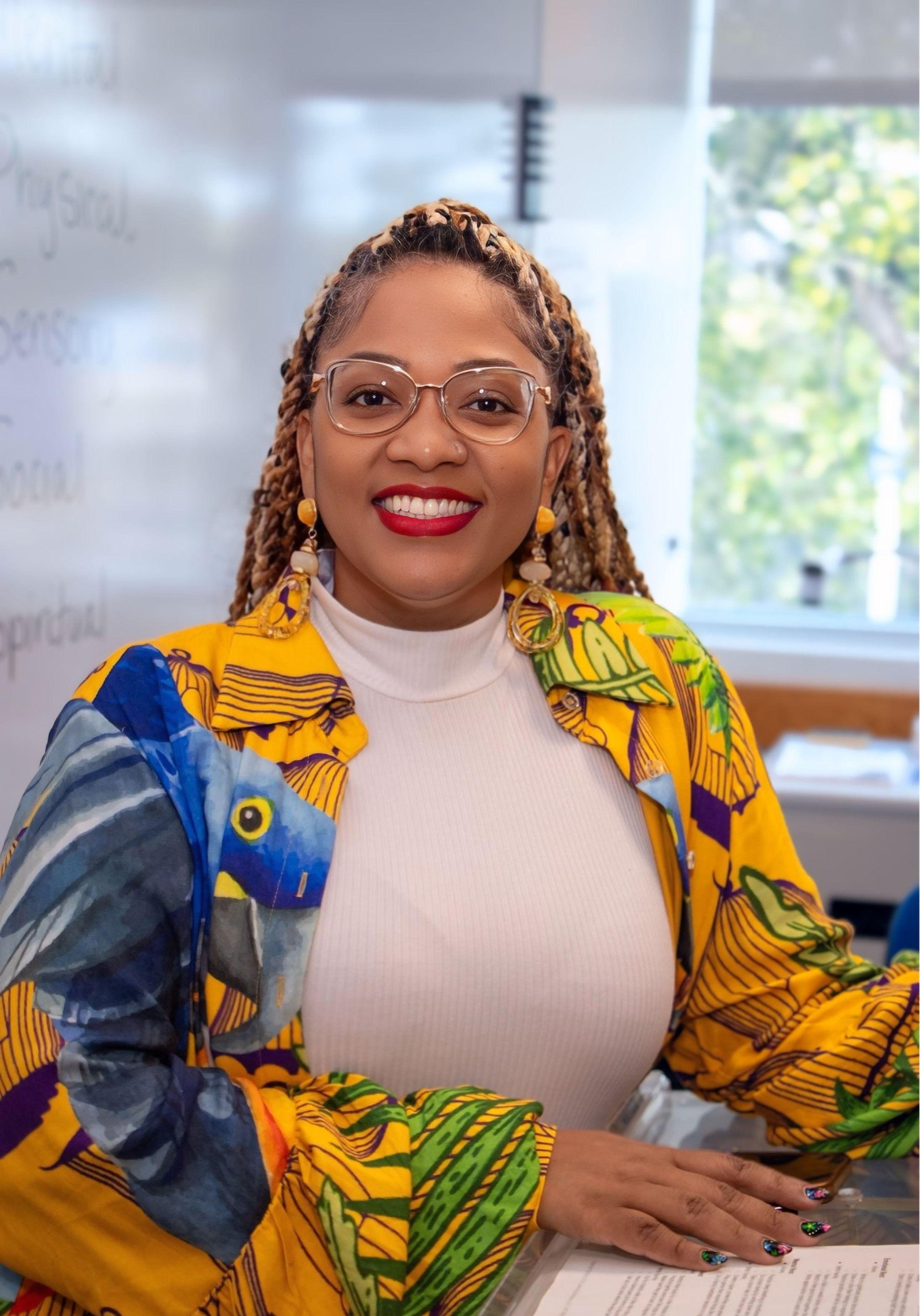

Start With Cats! Virtual Opportunities That Bring the Community Into the Classroom |
Participate and share : Poster
Tracey Rowley Jennifer McKenzie Michelle Singh
Join us to learn how to take a giant step forward in virtual experiences by bringing the community into your classroom. Participants will learn how to leverage video conferencing systems to create virtual classroom experiences that enhance lessons, embrace diversity, build community connections and provide equity of access to resources.
| Audience: | Curriculum/district specialists, Teachers, Library media specialists |
| Skill level: | Beginner |
| Attendee devices: | Devices useful |
| Attendee device specification: | Smartphone: iOS, Windows, Android Laptop: Chromebook, Mac, PC Tablet: Android, iOS, Windows |
| Topic: | Instructional design & delivery |
| Grade level: | PK-12 |
| Subject area: | STEM/STEAM, Social studies |
| ISTE Standards: | For Educators: Designer
Global Collaborator
|
| Related exhibitors: | Gale, Follett School Solutions, Renaissance, Wakelet, Microsoft Corporation |
With today’s generation of students, finding new ways to connect learning in the classroom with the outside community, making it relevant, providing diverse experiences, and furnishing new ways to provide social emotional learning can be a challenge. Our presentation will demonstrate practical ways that teachers can take can accomplish all of this from the comfort on the classroom. The best way to start is with cats! Reading a book with a student’s grandma and her cat, visiting the local shelter to visit the adoptable cats and learn about pet care, or talking with another class across the world using Flipgrid about pets are all easy options that can be easily implemented with very little work but have positive outcomes.
Many teachers have become comfortable with using video conferencing systems due to the demands of remote teaching. Virtual fieldtrips became more popular and more widely used than ever before, and with the new school year and most teachers returning to the classroom, many are still taking advantage of the incredible opportunities provided by them. Our presentation will challenge participants to take this concept to a new level.
Virtual classroom experiences can be developed to bring in service learning, exposure to diverse experiences and people and build social connections with other classrooms. We will demonstrate how classroom staples such as Career Day, Read Across America Day and classroom penpals can be go beyond the school walls. Using whatever video conferencing system that teachers are already comfortable with such as Zoom, Google Meet, Teams, or Facetime, or platforms such as Flipgrid, the world can come into the classroom. Students can virtually visit the local Food Bank to learn about the programs, a student’s aunt who is a truck driver can join the class from the road to talk about careers in shipping services, a small class in rural Oregon can have a book talk with a class in Miami. Employing virtual classroom experiences truly provides equity of access for all. No longer are teachers confined to who lives nearby or who is in their time zone. Literally the outside world can easily come to the classroom.
We will provide topics, ideas and strategies that have been employed successfully in our own districts and schools to demonstrate and provide exemplars of virtual classroom experiences. The exemplars will be practical take-aways that can be easily employed by schools and teachers. Every idea and example that will be presented will have been used by the presenters themselves and truly demonstrates how equity of access can be achieved.
Finally, participants will be encouraged to think about their own unique city/town/society and school, and brainstorm ways they can bring the outside world into their own classroom to enrich their lessons, provide opportunities to explore a diverse world, and expand the social, emotional learning opportunities for their students.
Cole, C., Ray, K. and Zanetis,J. Videoconferencing for the K12 Classroom: A Program Guide (2nd Edition), International Society for Technology in Education, May, 2009.
Fullan, M., Langworthy, M., & Barber, M. (2014). A Rich Seam: How new pedagogies find deep learning. London: Pearson.
Gaylord-Opalewski,Kasey andO’Leary Lynda, “Defining Interactive Virtual Learning in Museum Education: A Shared Perspective,” Journal of Museum Education, 44:3, 253-263, DOI: 10.1080/10598650.2019.1625015(2019)
Greenberg, Alan D. and Jan Zanetis. The Impact of Broadcast and Streaming Video in Education. San Jose: Cisco Systems Inc., 2012.
Greenberg, A. and Zanetis, J. (2012) The Impact of Broadcast and Streaming Video on Education. Cisco
http://www.cisco.com/c/dam/en_us/solutions/industries/docs/education/ciscovideowp.pdf
Howard-Kennedy, Jody. (January 1, 2005). Videoconferencing in Education. TechLearning.
http://www.techlearning.com/news/0002/videoconferencing-in-education/55814
Lindsay, Julie. The Global Educator: Leveraging Technology for Collaborative Learning & Teaching. International Society for Technology in Education, 2016. Print.
National Education Association. Partnerships of 21st Century Learning. Preparing 21st Century Student for a Global Society: Educators Guide to the Four Cs. Washington, DC. 2012
Newman, D. (September 19, 2013). 5 game-changing trends in unified communications. K12TechDecisions.
Raths, David. (June 17, 2015). 6 Ways Videoconferencing Is Expanding the Classroom: With instant access to international collaborators, virtual field trips and courses in other districts, learning can happen anywhere in the world, T.H.E. Journal.
https://thejournal.com/articles/2015/06/17/6-ways-videoconferencing-is-expanding-the-classroom.aspx
Schrum, Linda. (April 26, 2018) Tap your community for virtual field trip experiences. https://www.iste.org/explore/In-the-classroom/Tap-your-community-for-virtual-field-trip-experiences
Svitak, Adora. (April 21, 2010) 5 Ways You Can Use Videoconferencing. Mashable.com
http://mashable.com/2010/04/21/classroom-video-conferencing/#1FcETghqvqqn
Tenhet, Troy. (August 23, 2012). Beyond school walls: Connecting students and teachers around the world. Huffington Post. http://www.huffingtonpost.com/troy-tenhet/beyond-school-walls-conne_b_1825754.html
Zanetis, Janet, “The Beginners Guide to Virtual Field trips,” Learning and Leading with Technology, International Society for Technology in Education (ISTE), March, 2010.
Zanetis, Janet, “4 Expert Tips for Using Video in the Classroom,” EdTech magazine, December, 2015.

Tracey Rowley is a Microsoft Global Learning Mentor, MIE Expert and is a mentor and leader in implementing virtual fieldtrips in her school district. She has worked with districts around the world to help with setting up and implementing virtual fieldtrip protocols and has provided training for thousands of staff. She has worked with several National Parks to provide guidance about developing virtual fieldtrip experiences. Tracey is a guest speaker in the Flipgrid community and has worked very closely with two preeminent virtual fieldtrip providers, Explore by the Seat of Your Pants and the Center for Interactive Learning and Collaboration.

Ms. Jennifer McKenzie is a current Fulbright Teachers for Global Classrooms awardee and participant! She has been named Teacher of the Year five times and is currently a K12 District Teacher Librarian in Siuslaw School District, Florence, Oregon. She's been an educator for 20 years (previously English Language Arts, secondary and post-secondary education). She teaches reading advocacy, information and media literacy, digital citizenship and district wide technology integration. She's a Future Ready Librarian presenter and podcaster, and she serves as a board member for the Oregon Association of School Libraries to continually advocate for statewide literacy and library media science standards.

Michelle C. Singh is a National Board Certified Teacher (NBCT), international speaker, and bestselling author of "Educational Continuity During Uncertainty: Online Learning Considerations for Educators." With more than 17 years of experience in education, Michelle works diligently to support students, educators, parents, families, and professionals with equitable educational practices, technology tools, and evidence-based strategies. Michelle lives and works out of her home in South Florida USA where she is the founder and CEO of LCT-E Learning Solutions, a company created to empower and elevate her clients with innovative solutions and culturally responsive content.